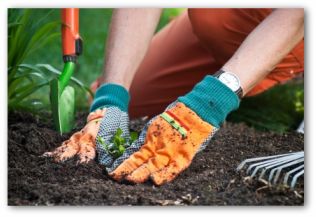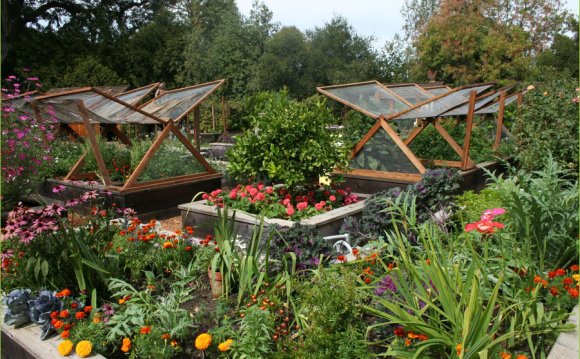
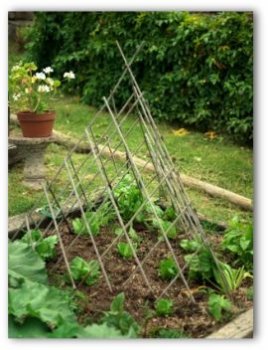 Tips for How to Make a Garden
Tips for How to Make a Garden
Here are tips for making a vegetable garden in 9 easy steps!
Grow your own fresh organic vegetables at home using this simple plan!
Even for the beginner, making a garden is easy.
Small and simple is a great way to begin your first vegetable garden.
Choose 6 or 7 of your favorite vegetables to get started.
Make a vegetable garden plan.
Purchase seeds or small plants from your local garden center.
Keep it simple.
Involve your family!
If you don't have access to a plot of ground, consider making a container, vertical or hanging vegetable garden.
If tilling up the soil seems like too much work, consider creating a raised bed, square-foot garden, or container garden in a sunny location.
Involve Your Kids with Making a GardenPlanning Stage
Making a Vegetable Garden
- 1. Start by choosing a level area of your yard that gets the most sunshine.
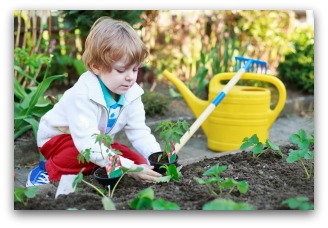 (Make certain that there are no trees or shrubs in the immediate area as their roots will rob your garden of water and nutrients.)
(Make certain that there are no trees or shrubs in the immediate area as their roots will rob your garden of water and nutrients.)
- 2. It is always a good idea to mark off your garden area with wooden stakes and string.
Start Digging!
- 3. Remove any existing grass with a shovel or spade.
Hint: You may also choose to erect a small fence around the area to keep animals and neighborhood pets out of your garden.
If this will be a permanent garden site, consider planting a border of blueberries or raspberries on the edge of your garden to create a delicious border.
- 4. The next step when making a vegetable garden is to dig the soil with a spade and loosen up all the clumps. Or if available, you can use a garden rototiller. Working the soil will allow air and water to circulate more freely in the soil.
Helpful Hints: It is essential that you add at least two inches of compost and well-aged manure to your soil at this point, and work it in.
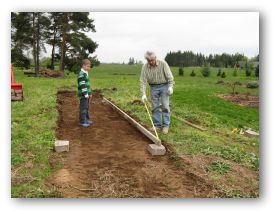 Compost gives soil even more air and allows water to easily penetrate right down to the roots.
Compost gives soil even more air and allows water to easily penetrate right down to the roots.
It is also a good idea to check the PH of your soil.
You can find the correct instruments for measuring PH in any home and garden store.
If you discover that the PH in your soil is not idea for making a vegetable garden, do not fret.
This is a fairly common problem and can be corrected with a small amount of lime of gypsum.
You will need to reapply these ingredients about once every year to maintain optimal PH levels.
Planting a GardenLayout
- 5. Layout your garden rows from north to south when making a vegetable garden, to prevent shading your plants. Also, plant tallest vegetables on the north end of your garden, medium height plants in the center, and shortest plants on the south end of your garden.
- 6. Use small stakes and string to mark your garden rows for planting.
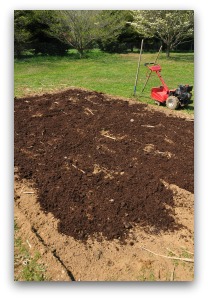 Hint: If your garden plot is more than 4 feet wide, be sure to leave 2-3 foot paths between your rows so that you will be able to tend and harvest your garden without trampling your plants!
Hint: If your garden plot is more than 4 feet wide, be sure to leave 2-3 foot paths between your rows so that you will be able to tend and harvest your garden without trampling your plants!
Plant and Water!
- 7. Follow the planting and spacing instructions on each of the seed packets or small plants that you have chosen.
- 8. Water your newly planted garden frequently, as the seeds need to be damp in order to sprout. Small vegetable transplants do not have well-established root systems, so take care that they do not completely dry during the first few weeks.
- 9. Take care to remove all weeds promptly from your garden, as they will try to "take over" if you let them get started.
Great Reasons for Making a Vegetable Garden
Making a Vegetable Garden is a Good Experience!
Making a vegetable garden can a fun and rewarding experience for the entire family.
To begin with, it will teach your kids exactly where fresh produce comes from.
It will also let them know the difference between fresh food and fast food, which can be an important life lesson and may inspire them to eat better healthier foods in the future.
Because as we all know, fresh food simply tastes better.
And once a child has helped plant and grow fresh vegetables, they will likely never pout or refuse to finish their veggies again!
